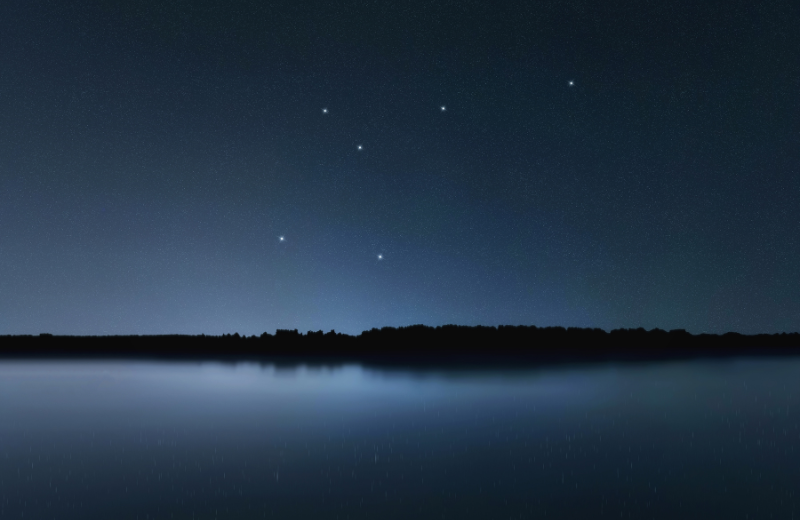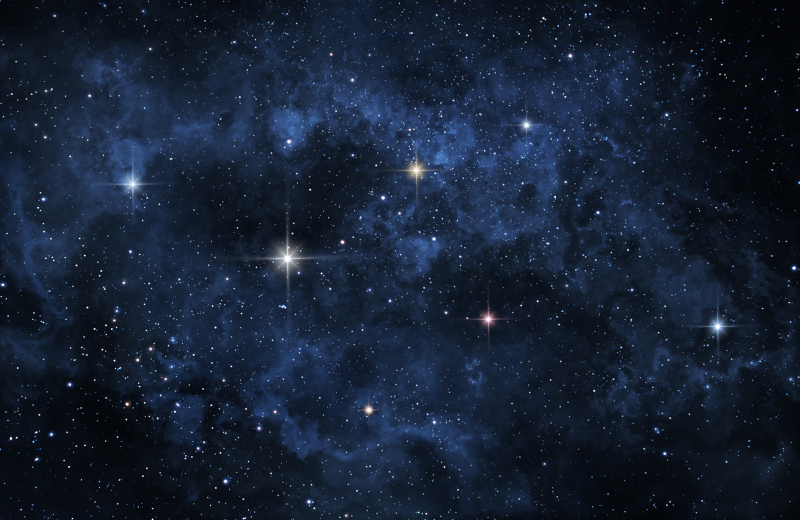Musca is a southern hemisphere constellation that isn’t as widely known as others, but still holds its own special charm. This guide shares what Musca is, how to find it, and the stars and stories that make it unique.
Jump to:
Recommended for you!
Best SellersWhat is the Musca Constellation?
Musca is one of the smaller constellations in the night sky, representing a fly. It’s located in the Southern Hemisphere, so it might not be as familiar to those in the northern parts of the world. The constellation is easy to spot with its distinct shape resembling a flying insect, which is fitting given its name.
The name Musca comes from the Latin word for "fly," and the constellation was officially recognised in the 16th century, making it a relatively recent addition compared to ancient constellations like Orion or Cassiopeia. Though small, Musca is surrounded by some prominent constellations, such as Crux (the Southern Cross), which helps you locate it more easily.
What is Special About Musca Constellation?
One of the things that make Musca special is its representation of an insect, which is quite rare in the world of constellations. Most constellations are based on mythological creatures or human figures. It’s also unique for being one of the 12 constellations identified by Dutch navigators Pieter Dirkszoon Keyser and Frederick de Houtman during their exploration of the southern hemisphere.
What Does Musca Look Like?

The shape of Musca is fairly straightforward and resembles a small, elongated quadrilateral. While it may not be as striking as other constellations, its stars form a compact and recognisable pattern that makes it relatively easy to identify once you know where to look. Musca’s stars are moderately bright, so it’s best observed on a clear night away from city lights.
How Far is Musca from Earth?
The Musca constellation, like most constellations, consists of stars that are varying distances from Earth. Its brightest stars are hundreds of light years away. For example, Alpha Muscae, the brightest star in the constellation, is approximately 315 light years from Earth. Although the stars seem close to one another from our perspective, they're spread across vast distances in space.
The Musca Constellation Myth

Unlike many other constellations, Musca doesn’t have a deep-rooted mythology dating back to ancient civilisations. This is mainly because it was discovered during the age of exploration when European navigators were mapping the southern skies. The constellation was first documented in the late 16th century, and while it doesn’t carry an ancient legend, its place among the stars highlights the human curiosity to explore and understand the unknown.
Musca’s Stars
The Musca constellation contains several notable stars that contribute to its distinct shape:
- Alpha Muscae: The brightest star in the Musca constellation, Alpha Muscae is a blue-white B-type subgiant, located about 315 light-years from Earth. This star is both hotter and more massive than the Sun, with an apparent magnitude of 2.69, making it the most prominent and easiest star to spot in the constellation.
- Other Stars: While not as bright as Alpha Muscae, Beta Muscae and Gamma Muscae are two additional stars that help form Musca's recognisable pattern. Though these stars may not be as well-known individually, they play a significant role in defining the constellation’s structure and adding to its overall beauty in the night sky.
Nebulae in the Musca Constellation

Musca isn’t just about stars; it’s home to an impressive nebula. The most famous is the Musca Nebula, also known as the Dark Doodad Nebula, a long, thin, dark cloud of gas and dust that stands out against the starry background. The nebula is a popular object for astrophotographers because of its striking appearance and the contrast it provides against the bright Milky Way.
Finding Musca in the Sky
Musca is best observed from the Southern Hemisphere and is visible throughout the year, although the optimal time to see it is during the autumn and winter months, from April to June. During this period, the constellation appears higher in the night sky, offering a clearer view.
Locating Musca
To locate Musca, start by finding the Southern Cross, one of the most recognisable constellations in the southern sky. Musca is situated just below the Southern Cross, which makes it easier to pinpoint once you've identified this prominent feature. For those stargazing in regions like Australia or South Africa, this is an ideal place to begin your search.
Viewing Musca with Binoculars or a Telescope
- With Binoculars: Musca’s stars, though moderately bright, are much clearer when viewed with binoculars, allowing you to trace its distinct shape more easily.
- With a Telescope: A telescope will provide a more detailed view of Musca’s stars, revealing its brightest members like Alpha Muscae and enhancing your stargazing experience.
Best Viewing Conditions
To get the best view of Musca, it’s essential to observe from a location with minimal light pollution. A clear, dark sky and a moonless night will offer the perfect conditions to fully appreciate the constellation's stars.
Recommended for you!
Best SellersFun Facts About Musca
- One of the few insect-themed constellations: Musca is one of the only constellations that represents an insect, which makes it quite unique.
- Relatively modern discovery: Unlike many ancient constellations, Musca was first documented in the late 16th century.
- Home to the Dark Doodad Nebula: This long, thin nebula is a favourite for astrophotographers due to its dark appearance against the starry background.
- Shares the sky with the Southern Cross: Musca’s proximity to the Southern Cross makes it easier to locate for those just beginning to explore the southern sky.
Study Astronomy for £29
The Musca constellation is a stunning and significant part of the night sky, offering beauty and rich history. If you're inspired to delve deeper into the wonders of astronomy, why not explore the Astronomy Diploma Course with Centre of Excellence? Whether you're a beginner or someone with more experience, this course will guide you through everything you need to know about the stars, constellations, and galaxies. And for a limited time, you can enrol for just £29!












